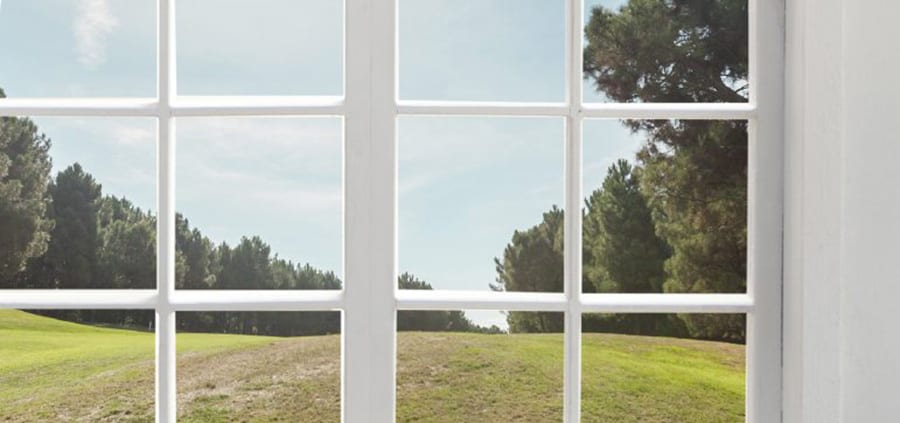
The four windows of personal growth and the fifth element of trust
There are so many things that enable and disable high-performance. What are we in control of? When I speak about time leadership I often speak about two keys, owning yourself and owning your priorities. Looking at high-performance, it’s not that dissimilar. When I consider achieving high-performance what am I in control of? What should I be focusing on? In this paper, I would like to cover what you can control: Your Four Windows of Personal Growth. This Model is based on the Johari Window*, aligned to ownership and vulnerability studies from our client growth and research, resulting in greater knowledge of oneself.
1. Open Window
You know how you work and what makes you tick. Others can see your traits in you and you develop open lines of communication with them. In the open window, you are not fearful because you understand your world and have harnessed what you are in control of and how you can be successful. Others see your strengths and weaknesses. They agree and accept who you are and work with you in a state of partnership in your open window.
The challenge is as human beings and participants in a busy world, we are challenged to grow and become more effective, as expectations for higher performance and engagement are set. This means you might need to “stretch” to be more effective.
You might need to learn things, own your fears, deal with change and often confidently step into new deliverables. Ultimately that means your open window needs to grow. It is easier said than done. As your open window needs to grow, you need to gain feedback, seek clarity, be in unfamiliar situations, stretch your capability, learn to own and recognise your vulnerabilities that deliver blind-spot behaviours.
2. Blind Spot Window
This window is the ‘trick-in-the-side-mirror’ of life. It’s the ‘crash and impact with others’ waiting to happen – the inability to move past your challenges and to harness your success. It’s the trap and barrier that blocks performance or even long term development and effectiveness.
This is the space others see: anger, controlling behaviour, frustration, poor communication, ineffective confrontation, fear manifested into emotion and even avoidance. These are only a few red-lights in the blind spot window. I could name many more as our blind spot manifests differently in different people.
Here is the challenge: with increasing ownership and accountability in the blind spot window, own the feedback and seek clarity on how you can grow. It might never change because our blind spot is fed from your hidden window where your excruciating vulnerability lives. So, the question is … how do you grow and learn to be more effective, to rise to the increased performance measures and challenges, respond effectively to a changing world and be the best version of yourself? How do you spot and stop your blind spot behaviours from impacting you and your world? Feedback alone won’t help you, it goes deeper.
The answer lies in you owning your vulnerability that is rooted in your shame, pain, fear and the idea that you are not good enough. The memories and experiences that shaped you as a person and made you who you are. This is your hidden window.
3. Hidden Window
This is the window of root cause and often the things hidden in this window are what have made you who you are. They have created the fuel for you to be successful. I know that one of my vulnerabilities stemmed from my days as a young single mother. I needed to provide for my daughter and believed I must work like a demon, challenge myself, and always be ready for what is next. I believed that results and financial freedom would allow me to give all I could to my children. There is more to my story, some things I gladly own and others that still create a blind-spot for me.
I have started to recognise that when I feel anxious, fearful and not worthy – it is my un-owned vulnerability flaring up in my hidden window. For me to hear and see things things the way they are (we call this ‘right-sizing’) I need to first know why I am feeling the way I am.
When others give me feedback or I reflect on situations I can now find ways of responding in a positive and solution-focused way versus blame, anger and denial. The more I own my vulnerability, share my story and build connection with others, the more open I am to feedback that helps me grow. It starts with me seeing and owning the things that belong to me that block my success. I can be coached and supported in this journey of discovery but that will mean the fifth element will need to be at play in my world.
4. Joint Discovery Window
This is where real growth happens. It’s based on the hidden and blind spots to be recognised and understood in order to grow. It does take vulnerability to work with others through your development, you can’t do it on your own. The more you are open to a growth mindset and willing to learn about yourself the more you will increase your joint discovery window. This will inevitably increase your open window, what others know about you and what you know about yourself.
Joint discovery will never work if the Fifth Element is not in play.
Fifth Element
The Fifth Element is the critical component to growth in an environment that is safe. It is where connection is fostered and where the foundation to engagement is Trust, Vulnerability and ultimately Credibility. Simon Sinek speaks about the circle of safety and that as leaders, you set the pace. Allow your people to learn, grow and be successful in a high-performance culture or even just be successful for themselves.
Key insights:
- Choose to open up and own your barriers to success
- Seek feedback and understand how you can be more
- Build a trusting partnership – lean in
- Don’t let your strengths be the elements that define you and become the greatest barriers to your ability to be high-performing. Grow and lead your own person through change.
* The Johari window is a technique used to help people better understand their relationship with themselves and others, which was created by psychologists Joseph Luft and Harrington Ingham in 1955.




